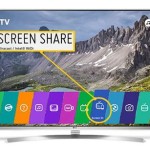How To Screen Mirror An iPhone To A Roku TV Without WiFi
Screen mirroring offers a convenient way to display content from an iPhone onto a larger Roku TV screen. This is particularly useful for sharing photos, videos, presentations, or even mobile games with a group. Traditionally, screen mirroring relies on a shared WiFi network. However, situations may arise where WiFi is unavailable or unreliable, necessitating alternative methods. This article explores how to screen mirror an iPhone to a Roku TV without a WiFi connection, outlining the challenges and offering workable solutions.
The fundamental principle of screen mirroring involves transmitting data from the iPhone to the Roku TV. In a typical WiFi-based setup, both devices connect to the same network, allowing them to discover each other and establish a data stream. Without WiFi, alternative communication channels must be employed to bridge the gap between the iPhone and the Roku TV. These alternative methods often involve using a physical connection or creating a temporary, direct wireless link.
Before exploring the specific methods, it is important to understand the limitations. Screen mirroring without WiFi may not provide the same seamless experience as when using a robust WiFi network. The connection might be less stable, and the image quality may be reduced. Furthermore, some apps and content might be restricted due to the lack of internet access on the Roku TV. Despite these limitations, screen mirroring without WiFi can be a valuable option in appropriate circumstances.
Using an HDMI Adapter and a Lightning Digital AV Adapter
One of the most reliable ways to mirror an iPhone to a Roku TV without WiFi is through a wired connection using an HDMI adapter. This method physically connects the iPhone to the TV, ensuring a stable and direct data transfer.
The necessary components include: a Lightning Digital AV Adapter (compatible with the iPhone's Lightning port) and an HDMI cable. The Lightning Digital AV Adapter converts the iPhone's Lightning output to an HDMI signal, allowing it to be displayed on the TV. The HDMI cable carries the video and audio signal from the adapter to the Roku TV.
The process involves connecting the Lightning Digital AV Adapter to the iPhone's charging port. Next, connect one end of the HDMI cable to the adapter's HDMI port and the other end to an available HDMI port on the Roku TV. Once the connections are made, select the corresponding HDMI input on the Roku TV using the TV's remote. The iPhone's screen should then be mirrored onto the TV display.
This method provides a direct and reliable connection, minimizing latency and ensuring good image quality. However, it requires purchasing the Lightning Digital AV Adapter and an HDMI cable, which may be an added expense. Additionally, the wired connection limits the user's mobility while mirroring the screen.
Despite the limitations, this method circumvents the need for WiFi, making it a viable solution when a network is unavailable or unreliable. It is particularly suitable for presentations, viewing photos or videos stored locally on the iPhone, and playing games.
Troubleshooting tips for this method include ensuring the HDMI cable is securely connected to both the adapter and the TV. Also, verify that the correct HDMI input is selected on the Roku TV. If the image is distorted or the audio is not working, try a different HDMI cable or restart both the iPhone and the Roku TV.
Utilizing Mobile Hotspot and Direct Wireless Connection
Another approach to screen mirroring without WiFi involves creating a mobile hotspot on the iPhone and connecting the Roku TV to this hotspot. This effectively establishes a direct wireless connection between the two devices, bypassing the need for an external WiFi network.
To create a mobile hotspot on the iPhone, navigate to the Settings app and tap on "Personal Hotspot." Enable the "Personal Hotspot" toggle. A password for the hotspot can be set for added security. Note that enabling the personal hotspot will consume mobile data, so it's important to monitor data usage to avoid exceeding data limits.
Once the mobile hotspot is active, navigate to the Network settings on the Roku TV. Look for the iPhone's hotspot name in the list of available wireless networks. Select the hotspot and enter the password if prompted. The Roku TV should then connect to the iPhone's mobile hotspot.
After the Roku TV is connected to the iPhone's hotspot, initiate screen mirroring from the iPhone. This typically involves using the AirPlay function. On the iPhone, open the Control Center by swiping down from the top-right corner of the screen (or swiping up from the bottom of the screen on older iPhone models). Tap the "Screen Mirroring" button and select the Roku TV from the list of available devices.
This method allows for wireless screen mirroring without relying on an external WiFi network. However, it has some drawbacks. Firstly, it consumes mobile data, which can be costly if large amounts of data are transferred. Secondly, the performance of the screen mirroring may be affected by the strength of the mobile data connection. A weak signal can result in lag or interruptions in the mirrored image.
The mobile hotspot method is best suited for situations where a limited amount of data needs to be transferred and a stable mobile data connection is available. It can be useful for sharing presentations or viewing short videos, but may not be ideal for streaming high-resolution content or playing graphics-intensive games.
Troubleshooting tips for this method include ensuring that the iPhone's mobile hotspot is enabled and that the Roku TV is successfully connected to the hotspot. Also, check the iPhone's mobile data signal strength. If the signal is weak, try moving the iPhone to a location with better reception. If screen mirroring performance is poor, reduce the resolution of the content being mirrored.
Using a Portable Travel Router (Ad-Hoc Network)
An alternative that addresses the limitations of both the HDMI adapter and the mobile hotspot method is the use of a portable travel router. These compact devices can create a local WiFi network without requiring an internet connection, allowing the iPhone and Roku TV to connect and communicate directly.
A travel router typically has a feature to create a local network, sometimes called an ad-hoc network. The specific steps to configure this feature vary depending on the router model. Consult the router's documentation to learn how to set up a local network without internet access.
Once the local network is created, connect both the iPhone and the Roku TV to this network. On the iPhone, go to Settings > Wi-Fi and select the travel router's network. Enter the password if prompted. Similarly, on the Roku TV, navigate to Network settings and connect to the same network.
With both devices connected to the travel router's local network, initiate screen mirroring from the iPhone using AirPlay. Open the Control Center, tap "Screen Mirroring," and select the Roku TV from the list of available devices.
This method offers several advantages. It allows for wireless screen mirroring without consuming mobile data. It also provides a more stable connection than relying on a mobile hotspot. Furthermore, it avoids the need for a physical cable connection, offering greater flexibility and mobility.
However, this method requires purchasing a travel router, which is an additional expense. The setup process may also be more complex than the other methods, requiring some technical knowledge. The performance of the screen mirroring is dependent on the capabilities of the travel router. A low-quality router may result in lag or interruptions.
This method is suitable for a variety of scenarios, including presentations, viewing photos and videos, and playing games. It is particularly useful in situations where a reliable and private WiFi connection is desired, but internet access is not required.
Troubleshooting tips for this method include ensuring that the travel router is properly configured and that both the iPhone and Roku TV are successfully connected to its network. If screen mirroring performance is poor, try repositioning the router to improve signal strength. Also, consider upgrading to a higher-quality travel router with better performance capabilities.
In summary, while the conventional method of screen mirroring an iPhone to a Roku TV involves a shared WiFi network, several alternatives exist for situations where WiFi is unavailable. The HDMI adapter method offers a reliable wired connection, while the mobile hotspot method enables wireless mirroring using mobile data. The portable travel router provides a more robust wireless solution by creating a local WiFi network. The choice of method depends on the specific circumstances, budget, and technical expertise of the user.

How To Mirror Iphone Roku Without Wifi 5 Steps With Pictures

How To Mirror Iphone Roku Without Wifi Robots Net
How To Mirror Your Iphone A Roku Tv

How To Mirror Iphone Roku Without Wifi 5 Steps With Pictures

How To Screen Mirror Your Iphone A Roku Tv Otech

5 Easy Steps To Mirror Iphone Roku Istreamer

3 Easy Methods How To Mirror Iphone Rokutv Airdroid

2024 Tutorial How To Use Airplay Apple Tv Without Wifi
What Is The Easiest Way To Screen Mirror An Iphone Roku Without Wifi Quora

3 Easy Methods How To Mirror Iphone Rokutv Airdroid








